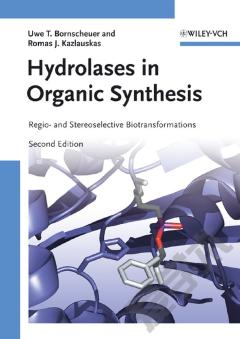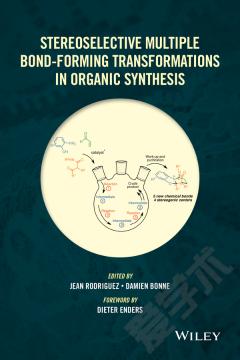Hydrolases in Organic Synthesis —— Regio- and Stereoselective Biotransformations
----- 有机合成中的水解酶:局部与立体选择生物转换
1 Introduction. 2 Designing Enantioselective Reactions. 2.1 Kinetic Resolutions. 2.2 Asymmetric Syntheses. 3 Choosing Reaction Media: Water and Organic Solvents. 3.1 Hydrolysis in Water. 3.2 Transesterifications and Condensations in Organic Solvents. 3.3 Other Reaction Media. 3.4 Immobilization. 4 Protein Sources and Optimization of Biocatalyst Performance. 4.1 Accessing Biodiversity. 4.2 Creating Improved Biocatalysts. 4.3 Catalytic Promiscuity in Hydrolases. 5 Lipases and Esterases. 5.1 Availability, Structures and Properties. 5.2 Survey of Enantioselective Lipase-Catalyzed Reactions. 5.3 Chemo-and Regioselective Lipase-Catalyzed Reactions. 5.4 Reactions Catalyzed by Esterases. 6 Proteases and Amidases. 6.1 Occurrence and Availability of Proteases and Amidases. 6.2 General Features of Subtilisin, Chymotrypsin, and Other Proteases and Amidases. 6.3 Structures of Proteases and Amidases. 6.4 Survey of Enantioselective Protease-and Amidase-Catalyzed Reactions. 7 Phospholipases. 7.1 Phospholipase A1. 7.2 Phospholipase A2. 7.3 Phospholipase C. 7.4 Phospholipase D. 8 Epoxide Hydrolases. 8.1 Introduction. 8.2 Mammalian Epoxide Hydrolases. 8.3 Microbial Epoxide Hydrolases. 9 Hydrolysis of Nitriles. 9.1 Introduction. 9.2 Mild Conditions. 9.3 Regioselective Reactions of Dinitriles. 9.4 Enantioselective Reactions. 10 Other Hydrolases. 10.1 Glycosidases. 10.2 Haloalcohol Dehalogenases. 10.3 Phosphotriesterases. Abbreviations. References. Index.
{{comment.content}}








 京公网安备 11010802027623号
京公网安备 11010802027623号